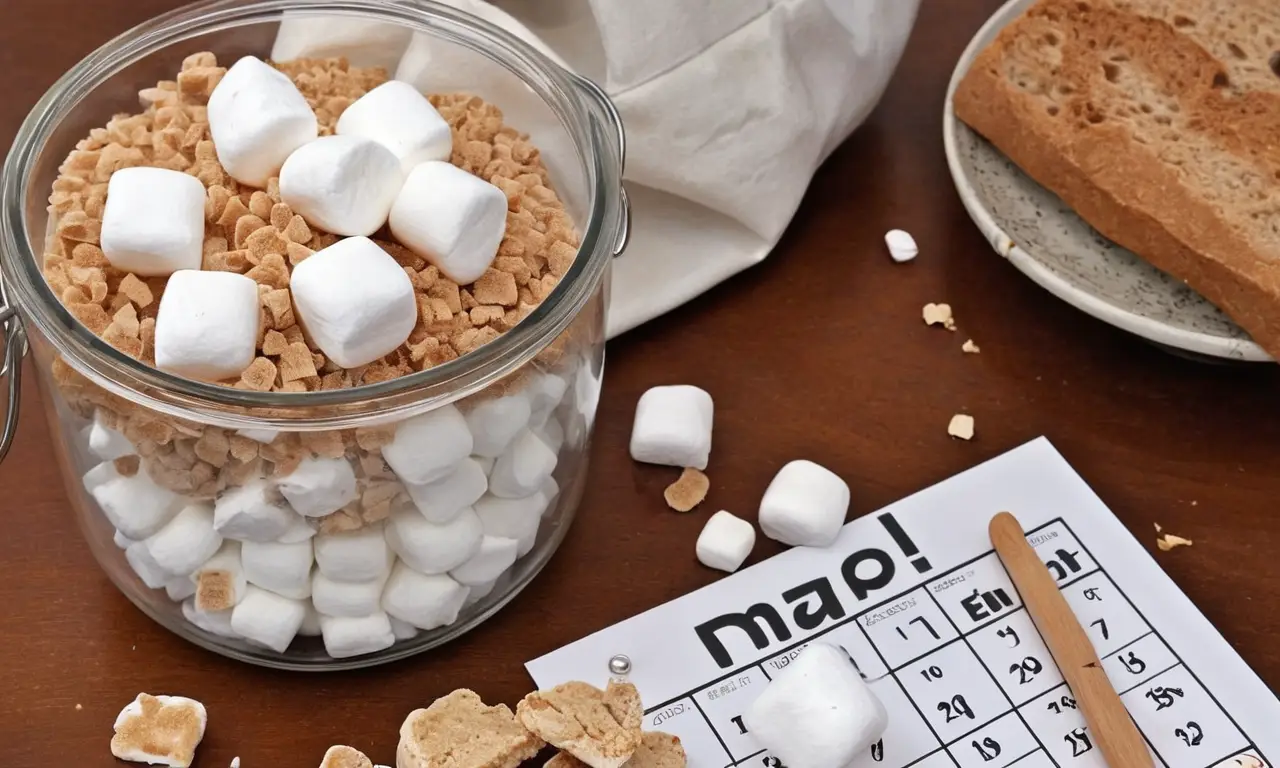Marshmallows are a beloved treat, enjoyed by people of all ages. Whether you’re roasting them over a campfire, adding them to hot chocolate, or simply snacking on them straight from the bag, marshmallows bring a touch of sweetness and fun to any occasion. But like all food products, marshmallows have an expiration date. Understanding how long marshmallows last can help you ensure that you’re enjoying them at their peak freshness and flavor.
This article will delve into the world of marshmallow shelf life, exploring factors that influence their longevity and providing guidance on how to determine if your marshmallows are still safe and enjoyable to eat. We’ll cover key concepts like “best by” dates versus expiration dates, the shelf life of unopened marshmallows, and the potential consequences of consuming expired treats.
Marshmallow Expiration Date
The expiration date on a package of marshmallows indicates the manufacturer’s recommended timeframe for optimal quality. This date is not necessarily a hard and fast rule, as marshmallows can sometimes remain safe to consume beyond this period. However, it’s generally advisable to adhere to the suggested expiration date for the best flavor and texture.
Marshmallow expiration dates are typically printed on the packaging in the format “Best By” or “Use By.” These dates provide a guideline for when the marshmallows are expected to be at their peak freshness. It’s important to note that these dates are estimates, and actual shelf life can vary depending on storage conditions and other factors.
Best By Date vs. Expiration Date

While both “best by” and “use by” dates indicate a timeframe for optimal quality, there is a subtle difference between them. A “best by” date refers to the last day when the marshmallows are expected to be at their peak flavor and texture. After this date, they may still be safe to consume but might not taste as good or have the same desirable consistency.
An “use by” date, on the other hand, is more stringent and indicates the last day when the marshmallows are considered safe for consumption. It’s generally recommended to follow an “use by” date more closely, as consuming products past this date could potentially pose a health risk.
Shelf Life of Unopened Marshmallows
Unopened bags of marshmallows typically have a shelf life of several months beyond their “best by” date when stored properly.
To maximize the shelf life of your marshmallows, it’s essential to store them in a cool, dry place away from direct sunlight and heat. A pantry or cupboard is an ideal storage location. Avoid storing marshmallows in humid environments, as moisture can lead to clumping and affect their texture.
Consuming Expired Marshmallows

While consuming expired marshmallows is generally considered safe, there are some potential risks to consider.
Expired marshmallows may have a stale taste or altered consistency. They might also develop an off-putting odor. If you notice any of these signs, it’s best to discard the marshmallows. It’s important to remember that expiration dates are guidelines, and individual experiences may vary.
Flavor and Texture Changes
Over time, marshmallows can undergo changes in both flavor and texture.
As marshmallows age, their sweetness may diminish slightly, and they may develop a more powdery or grainy consistency. This is due to the natural breakdown of sugars and starches over time. These changes are usually subtle and may not be noticeable immediately, but they become more apparent as marshmallows approach or exceed their expiration date.
Conclusion
Understanding how long marshmallows last can help you enjoy them at their best. While unopened marshmallows can often remain safe to consume for several months past their “best by” date, it’s important to consider potential flavor and texture changes. Always store marshmallows properly in a cool, dry place to extend their shelf life. When in doubt, trust your senses – if the marshmallows look, smell, or taste off, it’s best to err on the side of caution and discard them.



